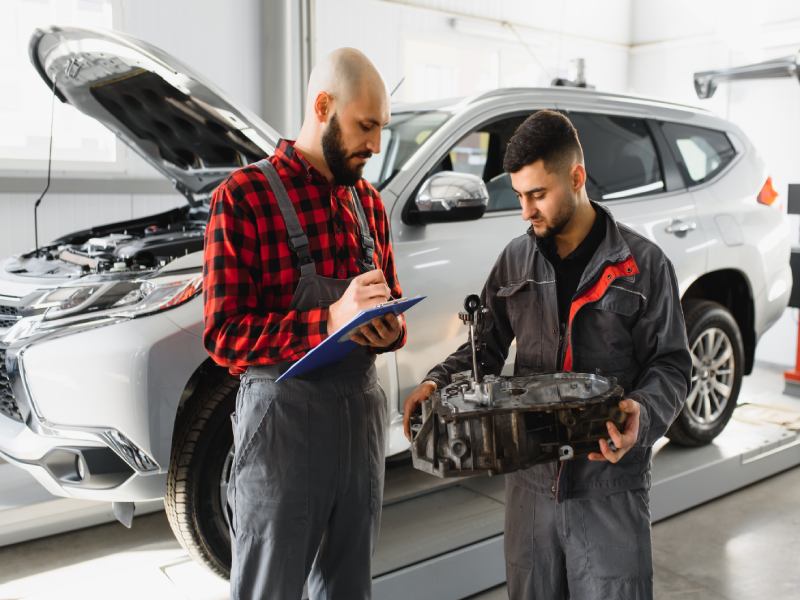Understanding Lemon Law in California: Your Rights and Vehicle Claims Explained
When you buy a new car, you expect it to be your reliable ride, but what if that shiny vehicle turns out to be a constant headache instead? Enter California’s Lemon Law—your safety net in the car-buying world. If you’ve ever found yourself stuck with a vehicle that seems more lemon than lemonade, you’re not alone. Many consumers are unaware of their rights and protections when faced with faulty vehicles, and navigating the complex laws can feel overwhelming. But don’t worry; this article breaks down everything you need to know about the Lemon Law in California, from understanding your rights to filing claims and securing compensation. So let’s dive into how you can advocate for yourself and make sure the car you drive is one that actually drives!
The California lemon law, officially known as the Song-Beverly Consumer Warranty Act, protects consumers who purchase or lease new vehicles that have significant defects affecting their use, safety, or value. Under this law, if a vehicle cannot be repaired after a reasonable number of attempts, the manufacturer is obligated to replace it or refund the purchase price to the consumer.
California’s Lemon Law Basics
California’s Lemon Law serves as a safety net for consumers, ensuring that if you invest in a vehicle, it lives up to a certain standard of quality. Under the Song-Beverly Consumer Warranty Act, this law steps in when your vehicle proves unworthy due to significant defects—meaning it doesn’t operate properly, devalues your investment, or compromises your safety. Picture this: you’ve just driven off the lot with a shiny new car only for it to languish at the dealership due to ongoing issues. That’s where the Lemon Law can become your ally.
To qualify for Lemon Law coverage, several factors come into play. Most importantly, the defect must be substantial. This isn’t about cosmetic flaws or minor inconveniences; we’re talking about mechanical failures that affect usage. You may wonder what constitutes a “reasonable number of attempts” at repair. Generally, if the manufacturer or dealer has tried—and failed—to fix the same issue multiple times (typically two or three, depending on severity) or if the car has spent an extended period out of commission (often 30 days), you can assert that you’ve got yourself a “lemon.”
Those experiencing issues like persistent stalling or repeated transmission problems are prime candidates for pursuing Lemon Law protections.
Additionally, unlike some other states, California’s Lemon Law does not require a formal warranty claim to be filed beforehand. This consumer-friendly approach makes it easier to assert your rights, but be mindful that you must keep meticulous records of all repairs and communications with the dealership. Documentation is key; every service receipt, repair order, and correspondence related to the defect can be crucial evidence supporting your case.

While navigating these waters may seem daunting, understanding how the process works empowers you as a consumer. The Lemon Law is designed not only to safeguard your rights but also to encourage manufacturers and dealers to maintain higher standards in their vehicles.
With this foundational knowledge in mind, it’s essential to explore the criteria that determine whether you qualify for these protections.
Eligibility Requirements
To benefit from California’s Lemon Law, you must meet certain criteria that define your vehicle’s situation.
First and foremost, your vehicle needs to demonstrate a substantial defect. This isn’t just a minor annoyance; the defect should significantly impact the vehicle’s use, value, or safety. For instance, if you’re facing constant engine trouble making it undrivable or dangerous on the road, that issue qualifies as substantial. On the other hand, a minor cosmetic blemish wouldn’t typically meet this threshold.
However, establishing a defect is just one aspect of the eligibility puzzle. The law also requires that you’ve given the manufacturer a reasonable number of attempts to fix the problem. Generally speaking, this means you need to present the vehicle for repair at least twice for serious safety defects, or four times for less critical issues. Think about it: if you’re encountering a persistent brake issue, you should make sure to document each time you brought the car in for repairs and any responses received so you can effectively build your case.
But what happens if your attempts are unsuccessful?
Alongside these considerations, there’s an important time frame to keep in mind. You must report the defect within 18 months of vehicle delivery or before hitting 18,000 miles—whichever comes first. This requirement underscores the urgency in addressing any issues promptly. If your vehicle’s problems linger beyond this timeframe, you might find yourself outside the protections afforded by Lemon Law.
Next is the necessity of notifying the manufacturer about these issues. While it may seem straightforward, providing formal notice is essential as it ensures that the manufacturer has an opportunity to rectify the problem before any claims are initiated. It’s not just an administrative detail but a gateway to potential resolution and accountability from them.

Statistics reveal that a significant portion of cases—nearly 70%—are successfully resolved in favor of consumers who meet these eligibility criteria. Yet remember, close to 30% fail primarily due to not satisfying these essential requirements.
After ensuring you meet all these eligibility criteria, we’ll now explore which vehicles fall under California’s protection laws.
Covered Vehicles
Not every vehicle qualifies for Lemon Law protections, so it’s vital to know where you stand. The law extends its coverage to a range of vehicles that might surprise you. It includes new and used cars, trucks, and SUVs—essentially any motor vehicle designed primarily for transportation. If you’ve purchased a vehicle from a licensed dealership, you’re likely covered under this law, whether it was brand new or pre-owned.
Additionally, demonstrator vehicles—those used for test drives—also fall under this umbrella. When a dealership showcases a car, the issues that arise afterward could mean you have a claim on your hands if something goes wrong. It’s not just cars that qualify; the law even covers motorcycles and boats due to special legislation designed to protect consumers in those markets. It’s fascinating how much ground this law covers, extending to recreational vehicles as long as they don’t include living quarters.
However, it’s essential to note the nuances in coverage. For example, if you were to purchase an RV, the Lemon Law would only apply to the chassis and chassis cab components. Many people purchasing RVs often overlook this but understanding these boundaries can save you from considerable disappointment later on.
Leased vehicles also enjoy protections under Lemon Law—but remember, this only applies if they’re intended for personal, family, or household use. Therefore, corporate leases or vehicles used solely for business might not enjoy the same safeguards. This distinction is significant as it influences your eligibility should problems arise.

As we explore further into claims regarding vehicle issues, remember that being well-informed about your rights prepares you to navigate the process effectively when faced with potential lemon situations.
Filing a Claim
Filing a Lemon Law claim in California isn’t merely about sending a few documents; it requires careful attention and structuring. First, you need to contact the manufacturer directly regarding the defects you’ve encountered. This step is crucial because it allows the manufacturer to address the issue, giving them an opportunity to make necessary repairs. It’s often best to reach out formally via email or certified mail so there’s a clear record of your communication.
Step I – Contact the Manufacturer
The moment you realize there’s an issue, don’t hesitate—reach out! When contacting the manufacturer, provide a comprehensive description of the defect and include any relevant vehicle information. This initial correspondence lays the groundwork for any claims that may follow. If possible, request a repair plan or ask for clarification on how they intend to fix the problem.
Remember, it’s not just about announcing that there’s a problem; you’re opening the door for dialogue and resolution.
Step II – Document All Repairs
Each interaction with both the manufacturer and dealership matters significantly. You should keep meticulous records of every repair attempt. Consider it your lifeline. Not only do detailed records help build your case, but they may also reinforce any patterns in the defect’s recurrence. Capture invoices, work orders, and even summaries of phone calls with service departments—these are pivotal pieces of evidence should your case require further escalation.

Step III – Submit a Claim
Once you’ve concluded that repeated repairs haven’t resolved your vehicle’s issues, it’s time to file a claim. Submitting this necessary documentation involves compiling everything you’ve gathered: repair receipts, communication records, and proof of your attempts to resolve this issue before taking formal action against the manufacturer. This submission usually goes through their customer relations department—make sure to double-check where exactly those documents need to be sent!
Step IV – Seek Legal Advice
If your claim is denied or if you encounter roadblocks during this process, consulting a Lemon Law attorney can be immensely beneficial. These specialists understand nuances in law that can empower you in negotiations—or provide guidance if litigation becomes necessary. They can help interpret complex legal terms and use their expertise to strengthen your position.
The key here is that persistent dedication will lead you toward achieving your rightful car replacement—or at least significant compensation.
Documenting each step properly ensures clarity in communications and fortifies your standing as you proceed further into this legal territory, paving the way for identifying what specific paperwork you’ll need moving forward.
Required Documentation
Proper documentation can make or break your claim, so it’s crucial to keep everything organized and comprehensive.
To start, one of the most important documents you need is your purchase or lease agreement. This contract outlines the terms under which you acquired the vehicle and serves as proof of your ownership. Having this document ready demonstrates that you are indeed the rightful owner when entering discussions with the manufacturer or in any legal proceedings.

Furthermore, maintain a detailed record of repair orders and invoices. This is not merely about keeping receipts; it’s about providing tangible evidence that you sought repairs for persistent issues. If you’ve taken your vehicle in multiple times for the same problem, these records prove you’ve engaged with the manufacturer’s warranty obligations. Each repair visit should be documented clearly, listing out what issue was addressed, as well as any parts replaced or serviced.
“One claimant shared that their diligently maintained records of repair visits and communications resulted in a swift settlement.”
Additionally, having a record of communication with the manufacturer proves incredibly beneficial. Keep all emails, letters, and notes from phone conversations logged meticulously. If you’ve made complaints or inquiries regarding the vehicle’s performance, having these written conversations can reinforce your claims about accountability on their part. Manufacturers often take complaints more seriously when there’s a paper trail showing a pattern of unresolved issues.
Log of Repair Attempts
A log of repair attempts and their corresponding dates is essential here too. This log should detail every time your vehicle has been serviced for issues related to safety, performance, or reliability concerns. For example, if your car has a recurring electrical issue, list each time you’ve brought it in for inspection along with dates and services performed. This log not only helps to establish a timeline but also shows the manufacturer’s failure to rectify ongoing problems.
Gathering comprehensive and accurate documentation forms a solid foundation for making a strong Lemon Law claim. With these materials prepared, you’ll be equipped to address further procedures involving alternative dispute resolution and other avenues available to assert your rights effectively.

Arbitration and Legal Options
Arbitration offers a path for consumers seeking resolution to Lemon Law disputes without the looming shadow of a courtroom trial. This method is generally quicker and less formal than court proceedings, which may sound appealing, particularly when you’re eager to find a solution. However, it’s essential to consider the nuances of this process to make an informed decision.
The central feature of arbitration is that it tends to streamline conflicts. Instead of lengthy trials, you sit down with an arbitrator—an independent party who reviews the evidence and makes a judgment. However, many consumers might not realize that this process often favors manufacturers since arbitrators are frequently chosen from programs developed by the very companies involved in the dispute. This raises concerns about potential bias, making some experts skeptical of arbitration as a fair resolution channel.
Given this backdrop, there’s an ongoing debate among legal advocates regarding whether arbitration is indeed beneficial for consumers or simply a way for manufacturers to sidestep accountability. Many recommend that if your Lemon Law case is substantial enough, it might be wise to pursue legal action in court instead. In court, established legal precedents often provide better defenses for consumers against the powerful automotive industry, leveling the playing field significantly.
Knowing your rights and entitlements within these processes can greatly influence your decision on whether to opt for arbitration or take your case to court.

Exploring Compensation Options
Whether you choose arbitration or court proceedings, understanding compensation can help guide your decisions throughout this process. Typically, compensation under California’s Lemon Law encompasses several key factors including the refund of purchase prices, coverage of incidental damages incurred due to car defects, and in some cases, even attorney fees.
- Purchase Refund: If your vehicle qualifies under the Lemon Law, you are entitled to a full refund of the original purchase price.
- Incidental Damages: These include expenses directly associated with defective vehicles—think rental car expenses while waiting for repairs or towing costs associated with breakdowns.
- Legal Fees: Outstanding attorney fees may also be recovered should you prevail in your claim.
Understanding how compensation works will equip you with critical insights as you continue to explore your rights and options as a consumer facing Lemon Law issues. This knowledge will serve you well as you move forward in seeking rightful reparation for your vehicle claims.
Compensation and Replacements
Compensation under California’s Lemon Law serves as a safeguard for consumers, ensuring that they are not stuck with a vehicle that simply doesn’t meet basic functionality or quality standards.
The law lays out clear avenues for relief that can result in significant financial adjustments, allowing you to regain your peace of mind. One primary form of compensation is the opportunity for a replacement vehicle; if your car is deemed a lemon after multiple repair attempts, you could receive a new vehicle of the same make, model, and features—giving you a fresh start without the ongoing headache of repairs. Imagine driving off in a brand-new vehicle instead of continuing to wrestle with a problematic one; it’s a refreshing change.

Full refunds are another option worth noting. If your vehicle falls under the Lemon Law provisions, you can receive a complete refund of the purchase price. This refund should also encompass associated costs such as taxes and registration fees. However, it is important to be aware that this refund will typically come after deducting a reasonable usage fee based on how long you’ve used the vehicle before the defect was discovered.
Real-life examples make these legal provisions far more meaningful. In one remarkable case, a consumer experienced persistent engine troubles in their newly purchased car. They presented valid proof of these defects along with records of repair attempts to back their claim. The outcome? They received a full refund under California’s Lemon Law, which speaks volumes about the protection it offers to consumers.
These avenues for compensation illustrate the benefits of Lemon Law and underscore its purpose: to protect consumers from being burdened by faulty products while fostering accountability among manufacturers. Navigating through claims can seem daunting at times; knowing your rights and available remedies—like replacements or refunds—makes all the difference in resolving these issues smoothly.
While receiving compensation is undoubtedly important, avoiding the situation entirely would be even more preferable. By remaining vigilant when purchasing vehicles and conducting thorough research, buyers can steer clear of lemons before they leave the lot. Remember that if something feels off during your purchase process or after driving your car home, it’s always better to address it sooner rather than later.
Understanding your rights in terms of compensation lays the foundation for making informed decisions while engaging in vehicle transactions. It’s crucial to be proactive in avoiding potential pitfalls that could lead to unwanted headaches down the road.

Avoiding Lemon Vehicles
One of the most effective ways to avoid buying a lemon is by taking your time and doing thorough research. When you enter a car dealership, it’s easy to get caught up in the excitement of a shiny new automobile or a promising used model. However, buying a vehicle isn’t just about aesthetics or allure; it’s about making a sound investment.
Step I – Perform a Detailed Inspection
First and foremost, always have a trusted mechanic inspect the vehicle before finalizing any purchase. Mechanics can uncover issues that might not be immediately visible to the average buyer. They know where to look for signs of previous problems, such as oil leaks or unusual tire wear—indicators of more serious issues lurking beneath the surface. If your mechanic finds something concerning, it’s better to walk away than gamble on repairs that could skyrocket into thousands of dollars.
Now that you understand the importance of having an inspection done, let’s identify potential red flags.
Step II – Check Vehicle History Reports
Utilizing services like CARFAX or AutoCheck can provide valuable insights into a car’s past. These reports can reveal prior accidents, title issues, and repeated service problems that might raise red flags. For example, a vehicle that has had multiple owners within a short period could indicate deeper mechanical problems or less-than-stellar performance. This knowledge arms you with information—power when negotiating or deciding whether to proceed with a purchase.
With inspections and history checks in your arsenal, let’s move on to one of the essential yet often overlooked aspects: the test drive.
Step III – Test Drive the Vehicle
The test drive is not merely an opportunity to get behind the wheel; it is your chance to experience the vehicle firsthand. Spend ample time driving under different conditions—accelerating on highways, cruising through city streets, and navigating tight corners—all while paying attention to how the car responds. Listen for unfamiliar sounds: rattling noises or grinding during shifts may point to underlying transmission issues. Trust your instincts; if something feels off, explore other options.

Research indicates that cars with extensive documentation and clear service histories lead to fewer Lemon Law claims. By ensuring you’re opting for a vehicle with solid documentation upfront, you stack the odds significantly in your favor.
Finally, even with these precautions in place, it’s essential to remember: defects can sometimes sneak through regardless of your diligence.
Understanding your rights under California’s Lemon Law offers an additional layer of protection. If you encounter unexpected repairs or constant issues soon after purchase, knowing the law can ensure you feel secure and confident in claiming what you’re owed if necessary.
By following these steps—from inspection and history checks to thorough test drives—you can elevate your car-buying experience and minimize the risk of ending up with an unreliable lemon vehicle.
Each step empowers you as a buyer, providing not just knowledge but also assurance as you navigate the complex world of purchasing a vehicle.
What documentation will I need to support my Lemon Law case in California?
To support your Lemon Law case in California, you will need several key documents including the vehicle purchase agreement, warranty documentation, repair invoices, and any correspondence with the dealer or manufacturer regarding the issues. It’s also beneficial to keep a record of the vehicle’s repair history and any reports from certified mechanics. Statistically, having detailed documentation can significantly strengthen your claim; according to consumer protection studies, cases supported by thorough records have a higher success rate in court settlements or arbitration.

What steps should I take if the dealership refuses to acknowledge my Lemon Law claim?
If a dealership refuses to acknowledge your Lemon Law claim, first document all communications and repair attempts thoroughly. Next, send a formal written notice to the dealership outlining your concerns and citing California Lemon Law. If they still do not respond favorably, consider filing a complaint with the California Department of Consumer Affairs or pursuing mediation or arbitration as many manufacturers have these processes in place. Statistically, around 75% of consumers who escalate their claims through legal means often receive better resolutions, underscoring the importance of persistence in asserting your rights.
Can I receive compensation for out-of-pocket expenses related to the lemon vehicle?
Yes, you can receive compensation for out-of-pocket expenses related to a lemon vehicle in California under the Lemon Law. This includes costs for repairs, towing, and rental cars incurred while your vehicle is being serviced for defects. Moreover, Lemon Law Lawyer California mandates that manufacturers must cover these costs if the vehicle is deemed a lemon after multiple repair attempts. According to data from consumer rights organizations, approximately 80% of consumers have successfully recovered such costs when pursuing claims against manufacturers.
What criteria define a vehicle as a ‘lemon’ under California law?
Under California law, a vehicle is defined as a ‘lemon’ if it has substantial defects that impair its use, safety, or value and cannot be repaired after a reasonable number of attempts, typically defined as two to four visits to the dealer for the same issue within the warranty period. Additionally, if the vehicle is out of service for 30 days due to repairs, it may also be considered a lemon. Statistics show that approximately 1 in 100 vehicles sold in California may qualify as lemons, highlighting the importance of understanding your rights and vehicle claims under this law.
How long do I have to file a Lemon Law claim after purchasing a defective vehicle?
In California, you typically have up to four years from the date you purchased a defective vehicle to file a Lemon Law claim. This time frame aligns with the statute of limitations for breach of warranty claims, as most lemon law claims are considered breaches of the manufacturer’s warranty. It’s important to gather all relevant documentation and records related to the vehicle’s defects during this period, as they will be crucial in supporting your claim. Remember that acting promptly can often lead to better outcomes in resolution.


